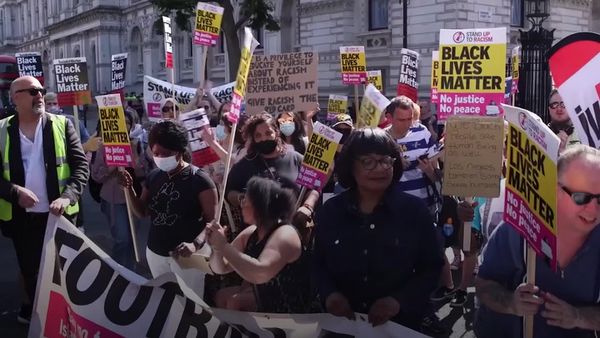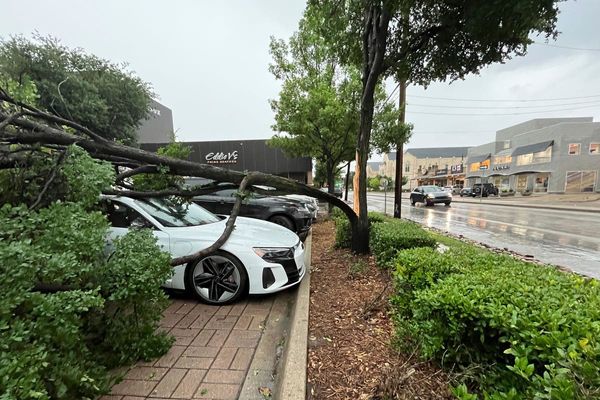
WHAT a difference a year makes.
About this time last year, much of the centre of Newcastle's Hunter Street Mall on its southern side was intact, with some shops still operating, but living on borrowed time. They were awaiting the wrecking ball several months ahead in line with the vast development happening just down the mall.
That involved the rebuilding of the landmark David Jones site, now the home of the QT hotel and residential tower unit blocks.
Also under way a little earlier and behind the traditional heart of the old Hunter Street Mall was the demolition of Newcastle City Council's ageing, multi-storey King Street public car park.
This was demolished (from memory) in 2022 and a reminder of how big it was (sandwiched between Laing and King street) can clearly be seen in today's remarkable picture taken in 1980 looking up Market Street, city, from the foreshore near Queens Wharf. The picture was taken on May 15, 1980, just before the Kern Corporation created its Market Square centre (now recently demolished).
The present ongoing redevelopment will be the third time in 108 years this pivotal area opposite Market Street has been developed. The (first) Strand Theatre opened on land here in April 1916, replacing the imposing old Borough Markets (from 1870) with its twin sentinel towers.
But this latest (and by far the largest) redevelopment of land around the Hunter Street Mall has not been without controversy. The latest modified scheme has a proposal to retain most of a cleared view corridor to Christ Church Cathedral in return for higher buildings on other parts of the redevelopment site.
Let's return to some of the history of this former Market Reserve and why it has important memories to many older Novocastrians. Although Watt Street to the east was the main street in convict days, today's Hunter Street Mall area was in later decades the historic heart, the central business district (CBD) of Newcastle.
So, let's start at the beginning. The British Government dumped convicts here in 1801 and again in 1804, chasing cedar and coal to try and make the colony of NSW profitable. Later most convicts were shifted to Port Macquarie and the town fell into decline by 1830, only saved by the start of private coal mining.

Along early Hunter Street, a market square, or market reserve, facing down Market Street and the harbour, was set out as the focal point of the growing township on an 1823 grid map.
It was bounded roughly by today's Morgan, Laing, Thorn and Hunter streets. The land had been a tip, a boatyard and even a small, "unknown" cemetery.
There had also been an early convict coal pit here, as well, which was apparently used until 1830 when mining was halted in the town centre, despite having three coal seams buried deep below.
The town's future looked bleak, with Hunter Street described as being a "sea of sand" in 1857.
Then in 1869 three blocks of land within the reserve, the "waste ground", were granted to Newcastle Borough Council for actual markets there and the rest of the land subdivided for related development.
The striking new Borough Markets lasted until 1915 but farmers rowing their fresh produce down river from farms on the harbour islands (now Kooragang) never liked it, preferring to sell on the Market Street wharf.
Around the back of the market building, in Thorn Street, was a notorious sailor-town pub called the Blue Bell with a landmark candlenut tree close by. This was where the enormous King Street car park was later erected.
Around the corner in tiny Morgan Street, many readers today might remember the long abandoned and recently removed St Mark's Chapel from the 1990s. Originally owned by the Catholic Church, a series of small, former terraces/offices were demolished to make way for this chapel.
But it was here some amateur historians have claimed the "Father of Federation" Sir Henry Parkes (1815-1896) once worked for the Customs Department early in his career.
I can't find proof positive of this, but maybe he was there temporarily in the early 1840s. It's known he did work for the Customs Department in Sydney as a tidewaiter inspecting merchant vessels to guard against smuggling, so who knows?
Fans of the later politician say he was an early "whistle-blower" risking his secure employment (in an economic depression) to call out corruption in the customs service. Parkes later became a five-time premier of NSW and was a critic of British colonial transportation of convicts as well as proactive to unite the then six colonies of Australia into one nation.
Anyway, the later Market Square (1980-2023) site on Hunter Street also has another claim to fame. Back in 1891 our city fathers proposed it could be the combined site of a civic centre with 30 offices and a giant arcade with 42 shops.
But this grandiose new town hall concept was shelved. Plans were drawn up, but it was too expensive to build. It was to be long and low in a classical design with an elaborate Baptist Tabernacle-style central section.
The main reason many older Novocastrians today remember the site though is that for 63 years a beloved palace of dreams called the Strand Theatre stood here.
Built on the Borough Markets site, the first Strand Theatre had a mixture of French/Spanish decor and opened in late April 1916 with its stage enlarged for live performances around 1921.
It was initially leased to the enterprising "Senora" Spencer, a success in a male-dominated industry. For a while, the building containing the Strand was even called the Spencer Block.
In 1937, the site was extensively remodelled in the Art Moderne style to become a standout cinema.
Under Greater Union control, Cinemascope was installed in 1955 as television and future suburban shopping centres loomed. But despite changes, the 1055-seat Strand Theatre finally closed on May 23, 1979, with site owner, Newcastle City Council, deciding to replace it with a shopping centre called Market Square.
Now, it too, has gone.







